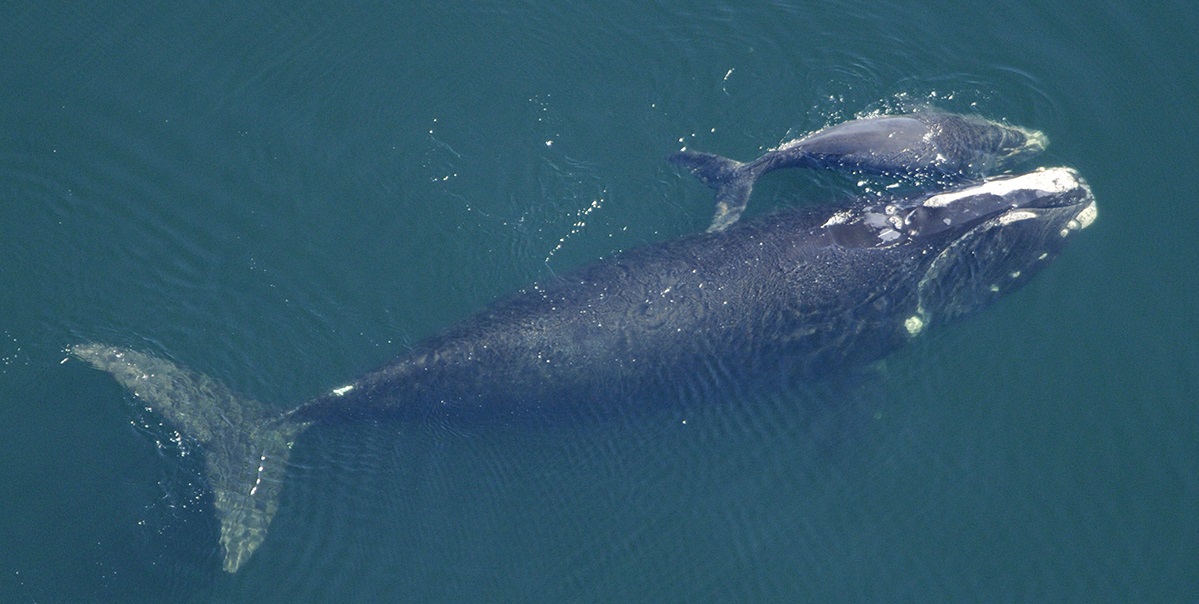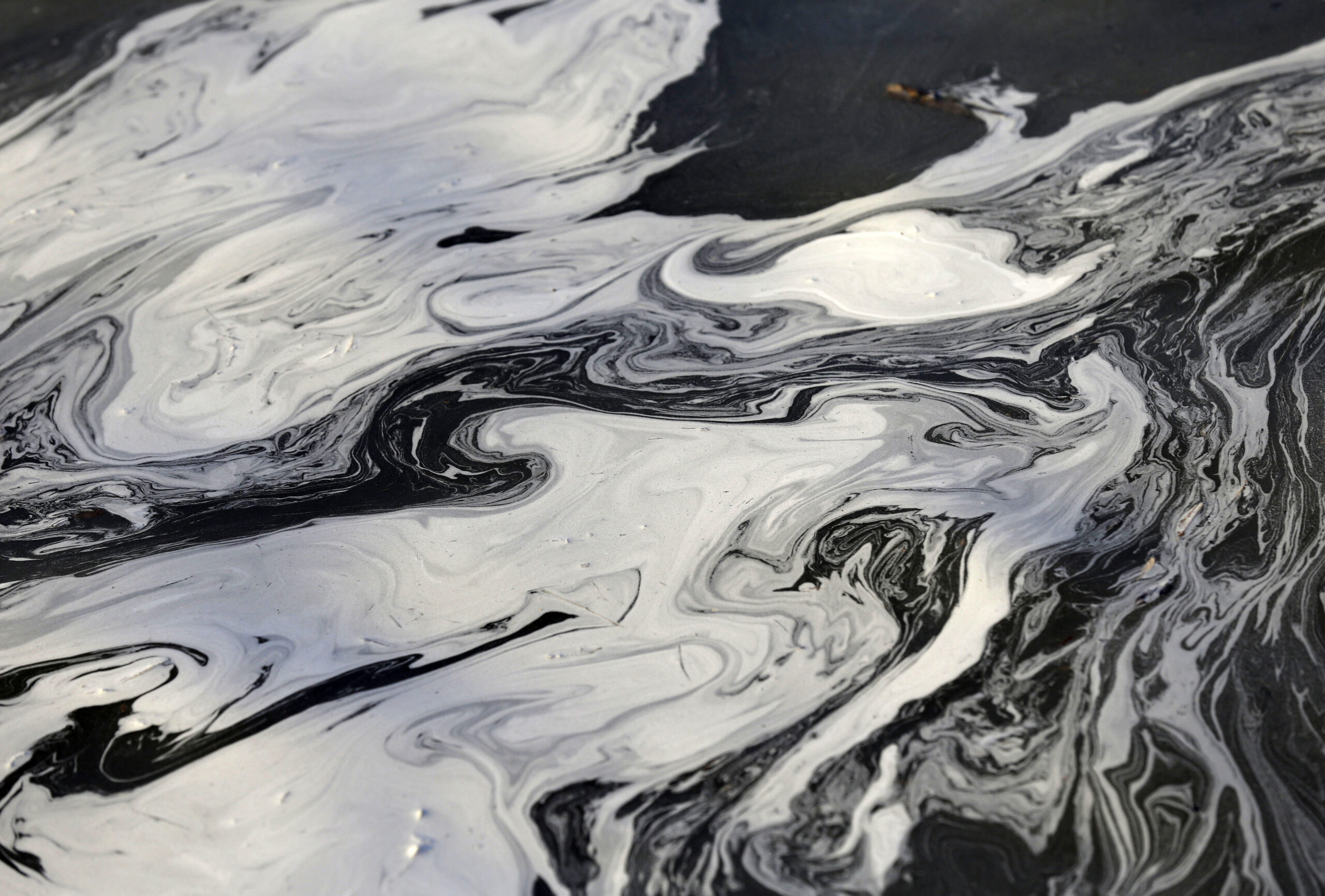With 7 Calves Spotted, This Winter Was A ‘Mixed Bag’ For Ga.’s Endangered Whales

In this Feb. 2009 photo provided by the New England Aquarium, a North Atlantic right whale swims with her calf in the Atlantic Ocean off the coast of the United States near the border between Florida and Georgia. They are some of the most endangered whales, but this year was slightly better news for the population: seven calves were spotted.
National Oceanic Atmospheric Association
Some of the most endangered whales in the world spend the winter off the coast of Georgia and north Florida. North Atlantic right whales give birth to their calves here before heading back north in the spring.
Last winter, though, was a bad one for them: they didn’t have a single calf, even as 20 have turned up dead since mid-2017.
Now, calving season is a wrap for 2019, and there’s slightly better news: seven calves were spotted.
Clay George, senior wildlife biologist with the Georgia Department of Natural Resources, called this winter “a mixed bag.”
“It’s certainly an improvement over zero,” he said. “I think we really need to see another couple of years of improved calving and a reduction in mortalities.”
To break even, the whales would need to be producing 15 to 20 calves a year, he said.
North Atlantic right whales were hunted nearly to extinction in the 1800s. Now, there are about 425 of the whales, and they face new threats: getting hit by ships; getting tangled in fishing gear; climate change, which could be making it harder for them to find food; and noise in the ocean. Mother whales are having calves less often, too, said George.
George said it’s tough to say that he’s optimistic at this point, though he hopes that maybe last year was a low-point and the whales will rebound and start having more calves in the future.
“One positive thing for this year, no dead whales or entangled whales were seen in the Southeast,” he said. “That’s a good thing.”
WABE editor Pat St. Claire contributed to this report.







